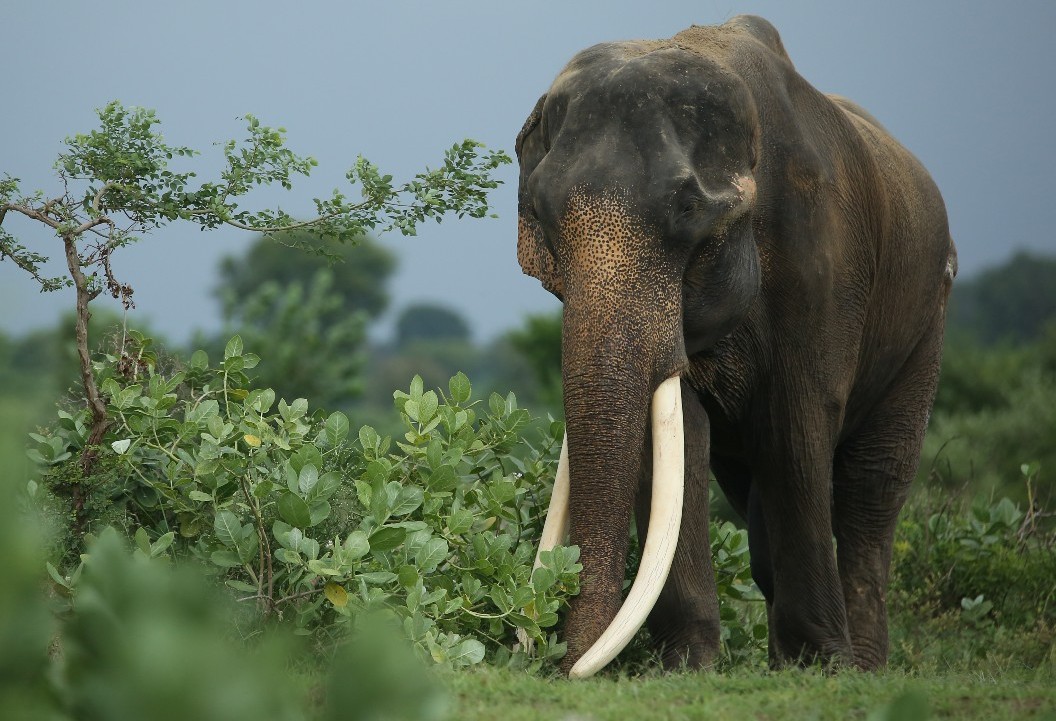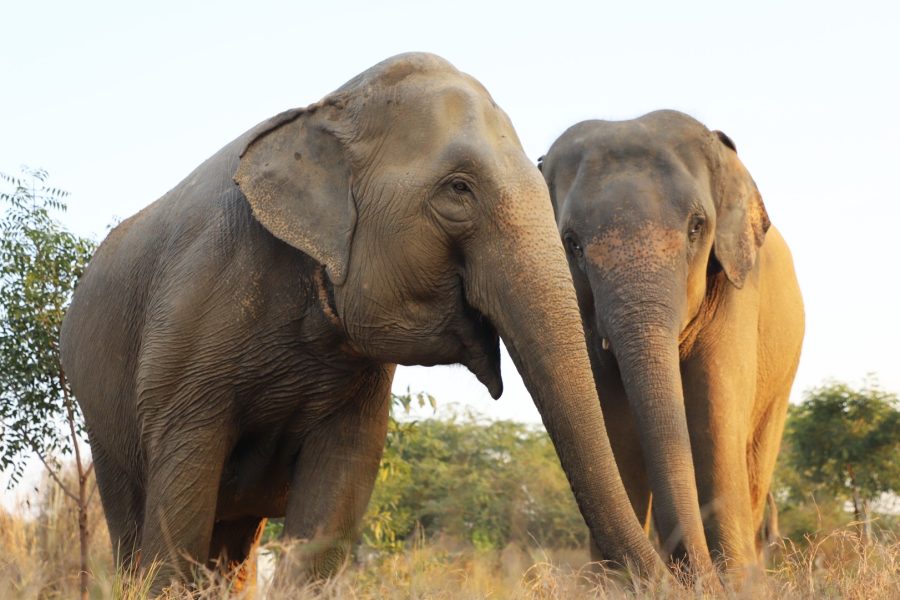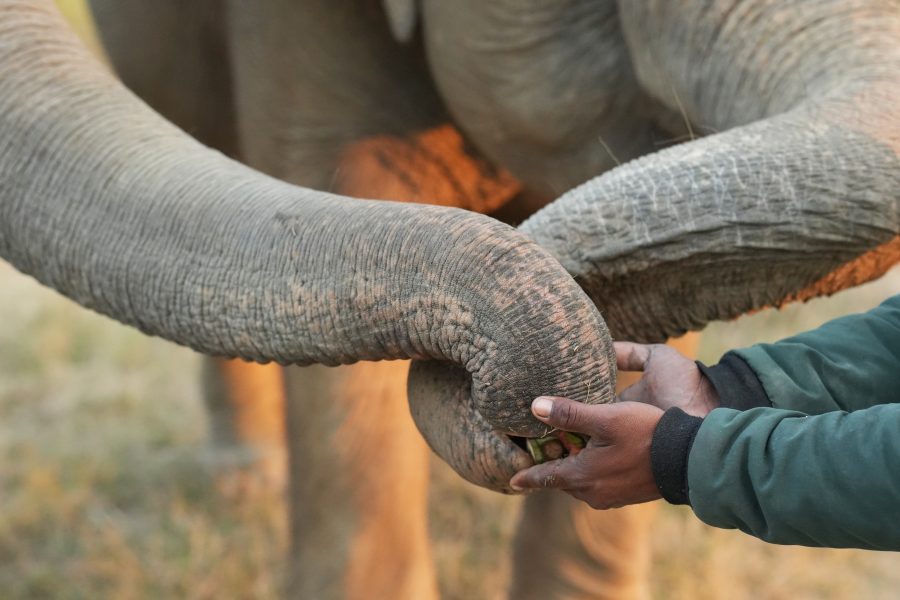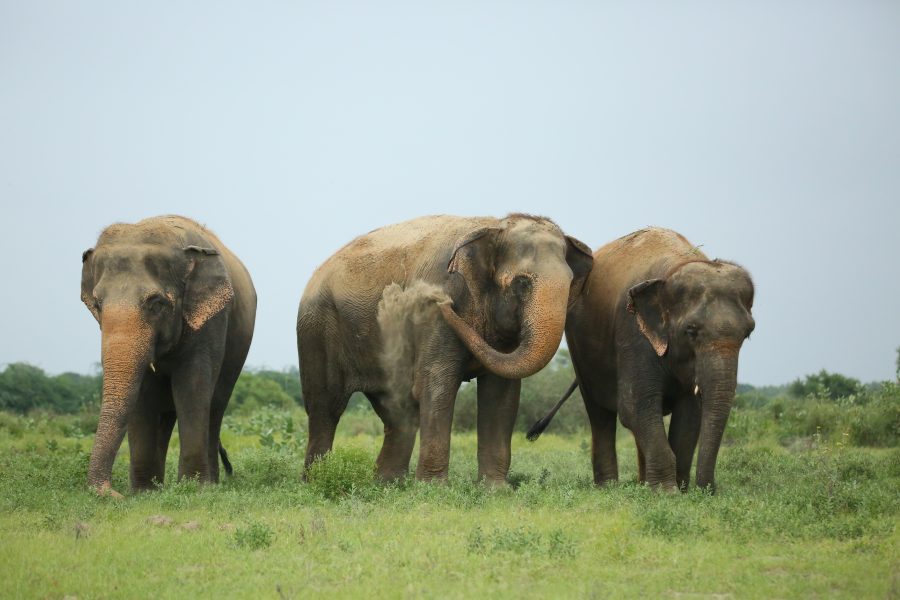Dental health isn’t just a concern for humans; it plays a crucial role in the well-being of all rehabilitated animals. From brushing and flossing to prevent cavities, to addressing bacterial films on teeth, proper oral care is essential. Beyond dental implications, good oral health positively influences overall welfare as well, as bacteria causing gum disease and decay can enter the bloodstream, affecting various body areas. Discomfort while biting discourages the consumption of nutritious foods by humans, and surely impacts sloth bears and elephants in the same way. For the latter, their tusks are in fact enormous teeth jutting out close to their mouths. In this article, let’s delve into the world of pachyderms, with specific focus on the often overlooked aspect of tusk maintenance and trimming.
Similar to other mammals, elephants experience a lifelong process of replacing deciduous teeth with permanent ones. Asian elephants have the dental formula: I 1/0 C 0/0 PM 3/3 M 3/3 (I-incisors, C-canines, PM-premolars, M-molars). While molars and premolars assist in grinding food, in some elephants, the incisors grow on to become tusks or tushes. Tusks are elongated incisors that extend beyond the lower lip, whereas tushes are incisors that protrude slightly outside the head. In Asian elephants, tusks are predominantly observed in males, while tushes can be found in some males and most females. It is also common for many male and female elephants to not have any incisors, an evolutionary change that occurred due to the consistent hunting for ivory. These tuskless males are often referred to as makhnas.
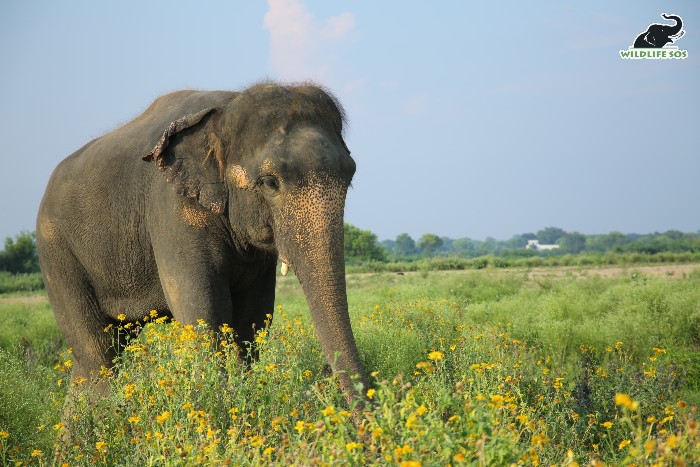
The tusks in male elephants serve a myriad of purposes, from digging and lifting objects to gathering food and stripping bark from trees. During musth, a period of heightened hormones in bulls, tuskers use their tusks to communicate dominance, and even thrust them into the ground as a formidable display. Interestingly, tusks also serve as a protective tool for the trunk—an invaluable appendage for essential activities like drinking, breathing, and eating.
An elephant’s tusk continuously grows throughout its life. While in the wild, the natural wear and tear of tusks, often leading to occasional breakage, is considered a normal part of their existence, however, the dynamics change significantly in captive care. In captivity as well as under rehabilitative care, elephants are shielded from the elements of the environment that contribute to regular tusk wear. But this protection can become a double-edged sword. Large tusks, if left unattended, pose serious challenges for both the elephants and their caregivers. From the perspective of elephant upkeep, oversized tusks can become a hindrance while tending to the animal.
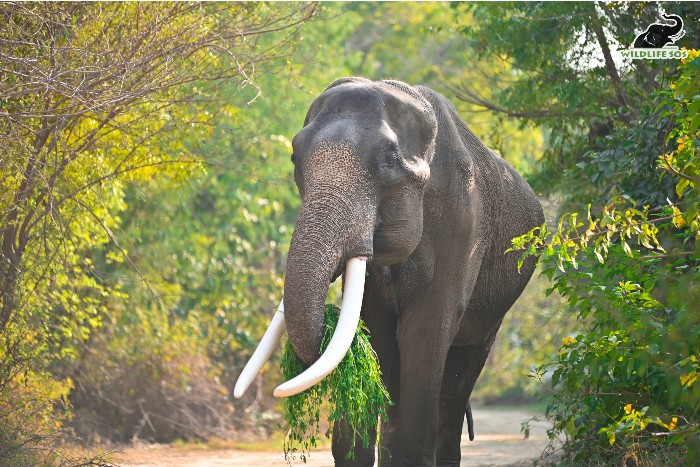
For the elephants, overgrown tusks can cause discomfort as it can impose several physical limitations. In some cases, convergent tusks may restrict the free movement of the trunk, affecting an elephant’s ability to perform natural and necessary behaviours, such as foraging, drinking water or dust bathing.
The stakes escalate when a tusk breaks at an irregular angle, exposing the pulp cavity. Such an occurrence can result in severe consequences, including profuse haemorrhaging, pulp infections, and, tragically, even death. This is why, in rehabilitative and captive care, proper maintenance of tusks is of paramount importance. By proactively managing tusk length and addressing potential issues on time, the veterinary team at Wildlife SOS ensures the well-being and safety of the elephants under their care.
Anatomy of the Tusk
Understanding the anatomy of an elephant’s tusk is fundamental to maintaining them effectively. Tusks have the same physical characteristics as most mammalian teeth, with a pulp cavity, dentine, cementum (a calcified connective tissue covering the outer surface of the root of the tooth), and enamel, the hardest substance in the body. The enamel, which also constitutes the major part of the tusk, acts as a resilient outer layer, safeguarding the dental crown and, more crucially, the sensitive pulp.
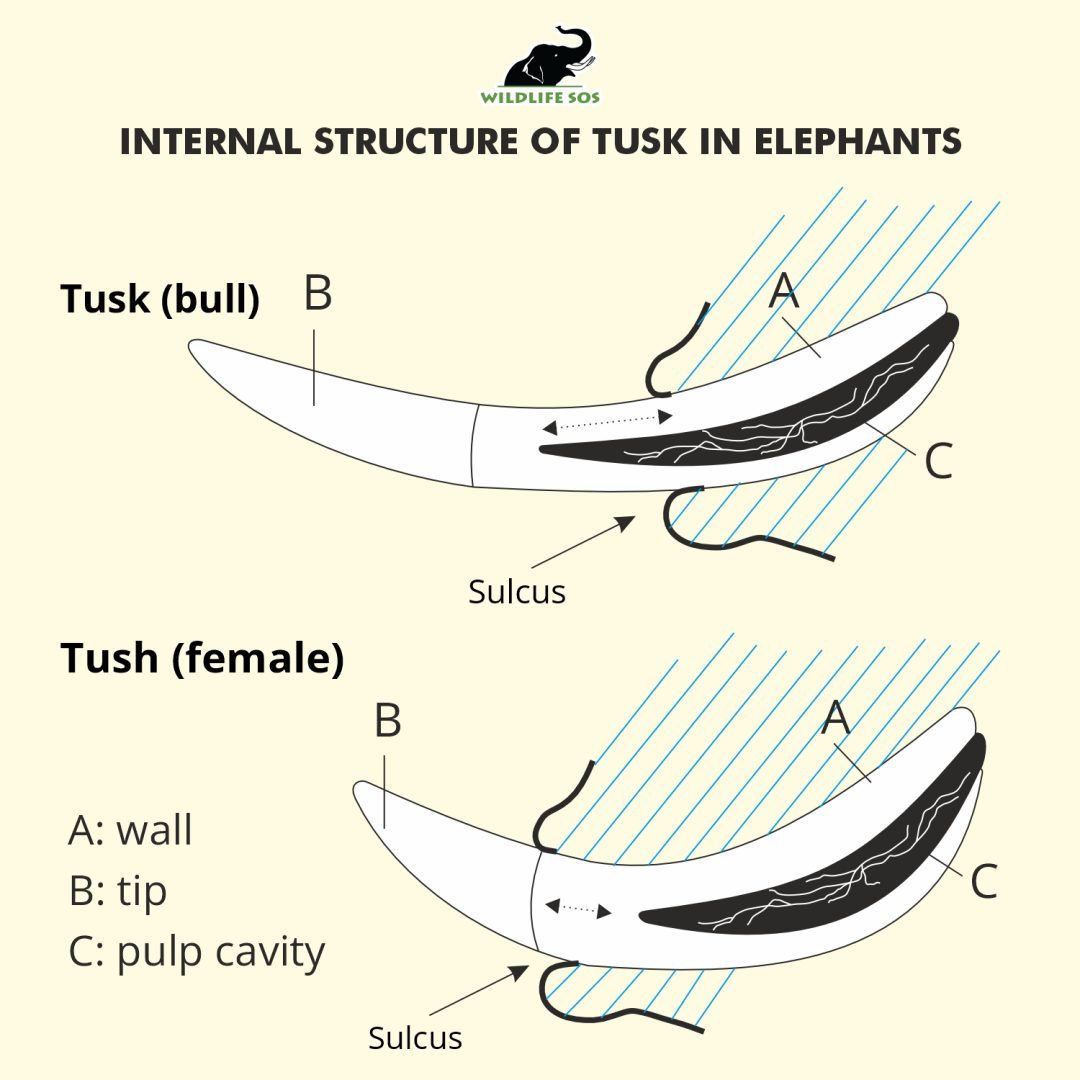
The pulp cavity, which hosts blood vessels and nerves, is extremely important as it forms the epicentre for tooth growth and maintenance. In elephants, discerning between tusks and tushes relies on the distinctive placement of the pulp cavity. In bulls (male elephants) with tusks, the pulp cavity extends beyond the sulcus, while in females (and some males) with tushes, the canal is entirely within the head. This distinction has led to the common misconception that tushes lack a pulp, which is inaccurate.
In their natural habitat, wearing out of tusks takes place primarily on the lower enamelled portions of their tusks due to constant use. However, when a tusk breaks at the pulp cavity region, it exposes the pulp, which is highly susceptible to infections. Such a scenario can escalate to life-threatening conditions, making urgent dental care imperative.

Thus, the periodic trimming of tusks emerges as a crucial responsibility for Wildlife SOS veterinarians, undertaken with assiduous care and stringent protocols. This procedure is not only subject to proper written consent and permissions from the Chief Wildlife Warden of Uttar Pradesh, but also requires the presence of forest department officials to ensure transparency and adherence to regulations. The significance of providing a valid and justifiable reason for tusk trimming cannot be overstated; it is done primarily to mitigate any potential risk of fueling the illegal ivory trade. It is also important to note that our team refrains from trimming an elephant’s tusks unless there is a specific and valid reason behind doing it.
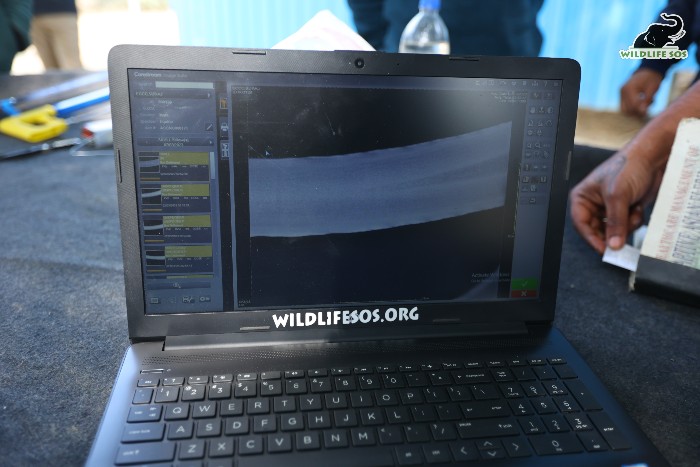
Since an exposed pulp can cause severe consequences, taking precise measurements in tusk trimming is essential. Once these measurements are obtained, the tusks are carefully cut using precision tools like wire saws, under the supervision of forest department officials. Subsequently, the excised tusks undergo thorough measurement and are then lawfully handed over to the forest department for proper disposal. Ensuring the proper disposal of the tusks is paramount to prevent their illegal entry into the ivory trade market.
Tusk Maintenance for our Bulls
Among the 11 bulls under the care of Wildlife SOS, six boast impressive tusks, while the remaining are makhnas, i.e., tuskless bulls. Our makhna lineup includes Macadamia, Raju, along with the newer resident, Rama.
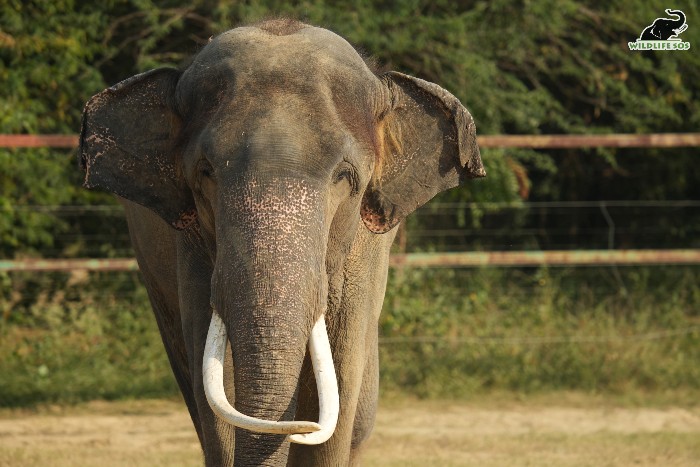
Much like the distinctiveness of fingerprints, each of our tuskers exhibits a unique tusk growth pattern, necessitating tailored and individualised care. While some tuskers have a standard tusk growth requiring minimal attention, others display distinctive patterns demanding specialised care to address their specific needs. For instance, Ramu showcases tusks that grow in a distinctive criss-cross manner, a characteristic that has not hindered him in his daily activities thus far. In contrast, Rajesh and Jai tend to vigorously use their forward-facing tusks, resulting in frequent cracks on them. To counteract this behaviour, their tusks are capped with metal, offering additional support and safeguarding the tips from potential breakage, which could expose their pulps.
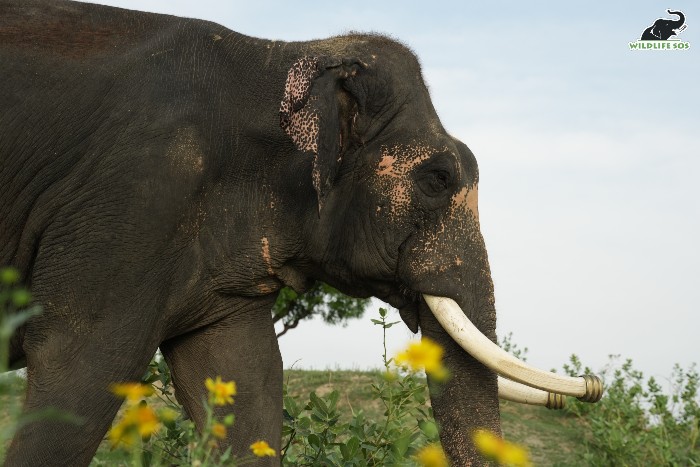
Sanjay‘s story is particularly poignant: having been a victim of the illegal ivory trade, his tusks were cruelly broken off before our rescue team intervened. Consequently, the remaining part of his tusks require special care due to the trauma he endured.
Suraj, a majestic tusker under our care, had endured a life of mistreatment and neglect within the confines of a temple in his past, where his impressive tusks became a spectacle for onlookers. In the last eight years since his arrival at ECCC, Suraj has been receiving desired attention that has helped him overcome the physical and psychological toll of his past, and regain both his health and his lost confidence. However, during this period, a poignant realisation dawned upon us: while his tusks were undeniably magnificent, their mighty weight burdened Suraj, restricting his movements. His large tusks were forcing him to navigate his trunk with caution as he traversed his enclosure and during his long walks. After careful consideration and deliberation, we approached the forest department with a request to trim his tusks. After receiving the necessary permission, we meticulously removed nearly 17 kg of tusk enamel, following the careful methods outlined earlier. Since then, the transformation in Suraj’s behaviour has been nothing short of remarkable!
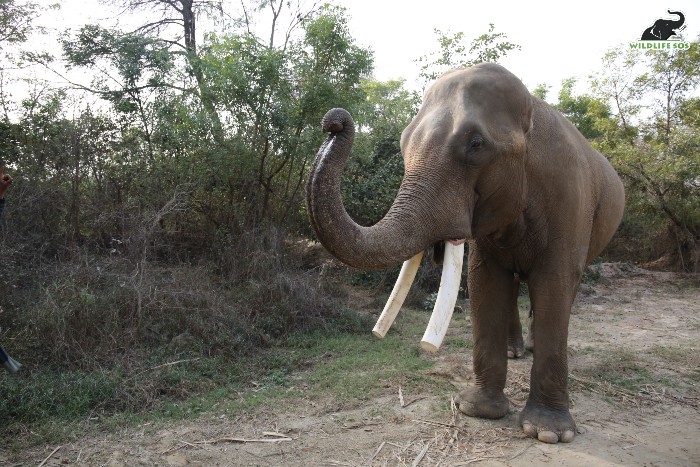
With his trimmed tusks, Suraj can now effortlessly engage with the various enrichments provided at our centres, including hanging and rolling-drum enrichments that were previously difficult to tackle. This newfound ease of movement resulted in a significant reduction in the stereotypic head-bobbing behaviour he exhibited earlier.
The well-being of animals at our centres is extremely vital, which is why our medical team stays abreast with the latest advancements in veterinary care to provide top-quality treatments. Armed with technical expertise of using advanced equipment, they perform delicate operations with great precision. Meanwhile, our caregivers, with their keen observation skills and knowledge of the animals, carefully monitor every facet of the animals’ care, discerning even the subtlest change in their behaviour. Their goal is to address any discomfort rehabilitated animals may experience, maintaining their health and fitness.
If you wish to support the welfare of our resident elephants, you can do so by making a donation. Your generosity will play a crucial role in sustaining the high standard of care and comfort we provide to these majestic beings.
Reference:
Sarma, K. K. (2011). Elephant Care. Directorate of Project Elephant, Ministry of Environment and Forests, GOI, New Delhi, Directorate of Project Elephant, Ministry of Environment and Forests, Indira Paryabaran Bhaban, New Delhi.

